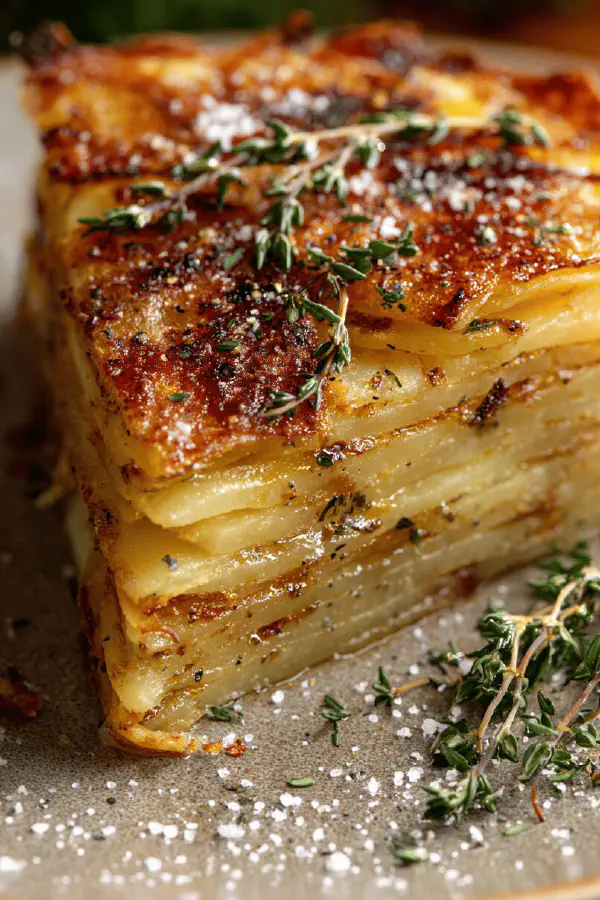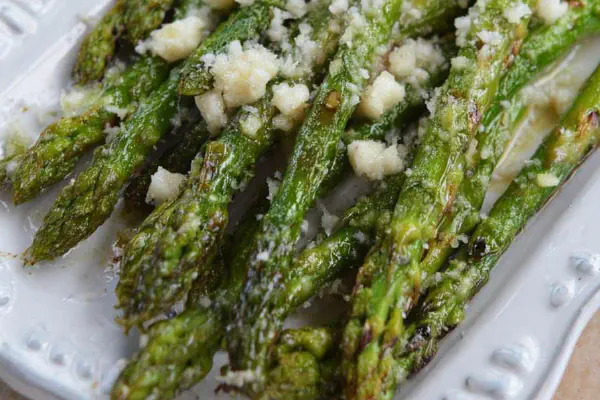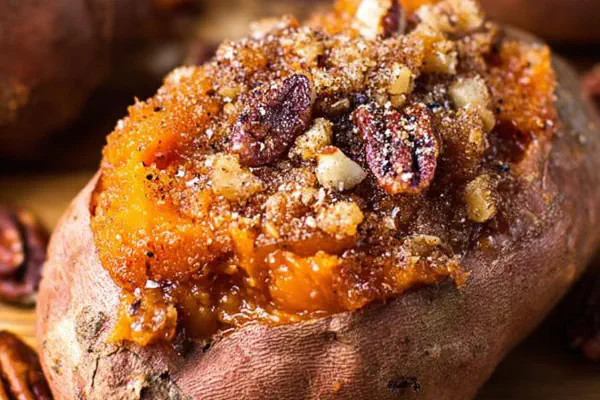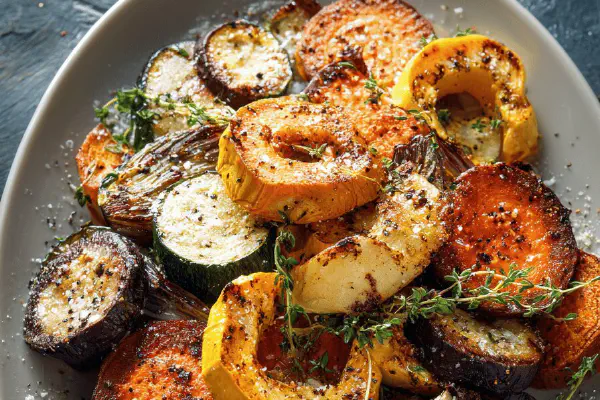Featured Recipe
Twisted Rösti Galette

By Kate
"
A crispy layered potato galette with swapped Yukon Golds for Russets, olive oil replacing butter, and fresh thyme for a herbal note. Handled for perfect moisture extraction then pan-seared twice to get edges golden and center tender. Salt and cracked black pepper carry the simple seasoning, no fluff. Techniques focus on moisture control, even browning, gentle flipping, and timing by sight and touch rather than clock watching.
"
Prep:
25 min
Cook:
35 min
Total:
60 min
Serves:
6 servings
potato
brunch
swiss
side dish
Introduction
Peeling, grating, wringing—steps that look simple but carry the weight of crisp rösti execution. Yukon Gold swapped in here for their creamy texture and rich flavor. The oil switch to olive oil adds a gentle fruitiness while cutting back butter’s milk solids that brown too quickly. Thyme’s subtle punch avoids overwhelming the potato but gives an extra layer. Attention to moisture dumping early keeps the rösti from soggy traps. Each flip, listen to those gentle crackling sounds they tell the story—patience rewards with crisp golden crust all around. You could rush it but risk raw bits or burnt edges. Recognize the visual cues: dry edges, firm surface, aroma of roasting potatoes. That’s your cue to flip with confidence. Slice wedges while still hot, the interior steamy and tender, outside pleasantly crunchy. No soggy centers. No burnt spots. All eyes and hands on timing, texture, and touch here.
Ingredients
About the ingredients
Swapping Yukon Gold for Russet? Expect creamier texture, slightly less dry. Depending on starch content, you may need to adjust wringing intensity. Olive oil instead of butter withstands higher heat without burning and adds different aromatic notes, though it won’t be as rich. The salt amount balances flavor without drawing excess water too fast. Herbaceous twist with fresh thyme complements the earthiness but is optional. If allergic or no fresh thyme, try chopped chives or parsley. Keep potatoes peeled for texture; skin-on yields rustic but uneven cooking. Râper finement is key. Too coarse equals lumpy rösti; too fine makes it pasty. Use dry towel or paper towels to wring out moisture thoroughly—don’t skip this since moisture is the enemy of crispness. Store grated potatoes briefly in cold water if prepping earlier, but drain and dry well before mixing.
Method
Preparation
- Rough grate all potatoes. Half at a time, place the shreds in a clean kitchen towel and wring aggressively over the sink. Squeeze until the moisture running off is mostly clear with no starchy cloud. Aim for about 1.5 liters of dried, shredded potato. This moisture removal avoids soggy rösti and improves crisping. Set aside.
- In a wide bowl, toss shredded potatoes with 10 ml olive oil, salt, pepper, and thyme. The herb adds subtle aroma but keep it minimal to avoid overpowering the potato. Do not add more oil here; distribution needs to be uniform but not oily.
- Heat a 23 cm (9 inch) nonstick skillet over medium-high until slightly smoking. Pour 20 ml oil to coat the base and swirl well. Spread potato mix thinly but with some thickness, pressing lightly to form an even cake that sticks to pan edges slightly. Cover and cook undisturbed for 7 to 10 minutes. Look for the edges to turn golden brown and firm to the touch before attempting to flip. You’ll hear a crackling as moisture evaporates, and a nutty roasted aroma will start developing.
- Carefully slide a large plate over skillet. With a quick flip wrist motion, invert the pan so rösti lands on plate, golden side up. Add remaining 15 ml oil back to skillet. Gently slide rösti back in, uncooked side down. Reduce heat to medium. Cover loosely and cook another 12 to 15 minutes. Check tenderness with a fork—should pierce easily. The second side tends to brown slower but watch for uniform color and resisted sticking.
- Transfer rösti to cutting board. Cut into wedges while hot. Serve immediately. Good with a dollop sour cream, smoked salmon, or a fried egg. Cool rösti stored wrapped crisps poorly—best eaten same day.
- Too wet next time? Try a salad spinner or even blot potato shreds between several layers of paper towels. If sticking occurs, pan not hot or oil layer insufficient. Never flip too early or galette breaks apart. Maintain medium heat to prevent burning underside before crisp edges form. If potatoes brown unevenly, redistribute pressing and avoid crowding pan surface.
Mixing
Cooking first side
Flip and finish
Serve
Troubleshooting
Technique Tips
The moisture squeeze is your first control point—dry potato shreds crisp better and cook more evenly. Use a kitchen towel or muslin and twist hard over the sink. Then mix with oil and seasoning but no more oil than needed; too much grease steams rather than fries surfaces. The skillet needs to be hot enough for immediate sizzle on contact. If too cool, potatoes stick and get soggy. Distribute potato mix evenly in pan but with some thickness, so the rösti isn’t thin or fragile. Press edges slightly to hold shape but do not compact excessively or it turns dense. Cooking first side covered traps steam for interior softness but uncovered makes crust too dry and hard. Flip only once edges and bottom are golden and firm—impatience leads to breakage. Flip onto plate, add oil to pan before sliding back. Cover loosely to finish cooking through without burning. Test tenderness with fork tactility. Serve hot to enjoy crispiness; cooled rösti tends to lose textural contrast. Practice patience with heat and timing—hear crackle, smell browning, observe dry edges. This is mastery, not guessing.
Chef's Notes
- 💡 Moisture control crucial—wring hard for dry shreds. Clear liquid means done. No starchy runoff. Avoid sogginess. Use a towel; skip the spin.
- 💡 Oil matters—too much? Steamed not fried. A thin coat allows crispy edges. With olive oil, higher smoke point. No burnt butter flavor.
- 💡 Grating technique counts—rough shredding ensures texture. Fine makes pasty and lumping isn't good. Experiment with blade types; find the sweet spot.
- 💡 Listen for crackles—audible cue for moisture leaving. It's telling you something. Golden edges firm up, aroma shifts to roasted vibe.
- 💡 Timing isn’t just clock—watch the visual cues. Edges drying, firm touch, golden brown signals you’re in the zone. Flip to check.
Kitchen Wisdom
How to avoid a soggy rösti?
Wring out all moisture. Use a clean towel; twist hard. If wet, respin or blot between paper towels.
What oil works best for frying?
Olive oil's high smoke point holds up well. Avoid butter, it browns fast. Try avocado or grapeseed too.
What to serve with rösti?
Good with sour cream, smoked salmon elevates, fried eggs add richness. Mix flavors as preferred.
How to store leftover rösti?
Cool completely, fridge up to 2 days. Crisp in a skillet for revival. Avoid microwaving; soggy city.



